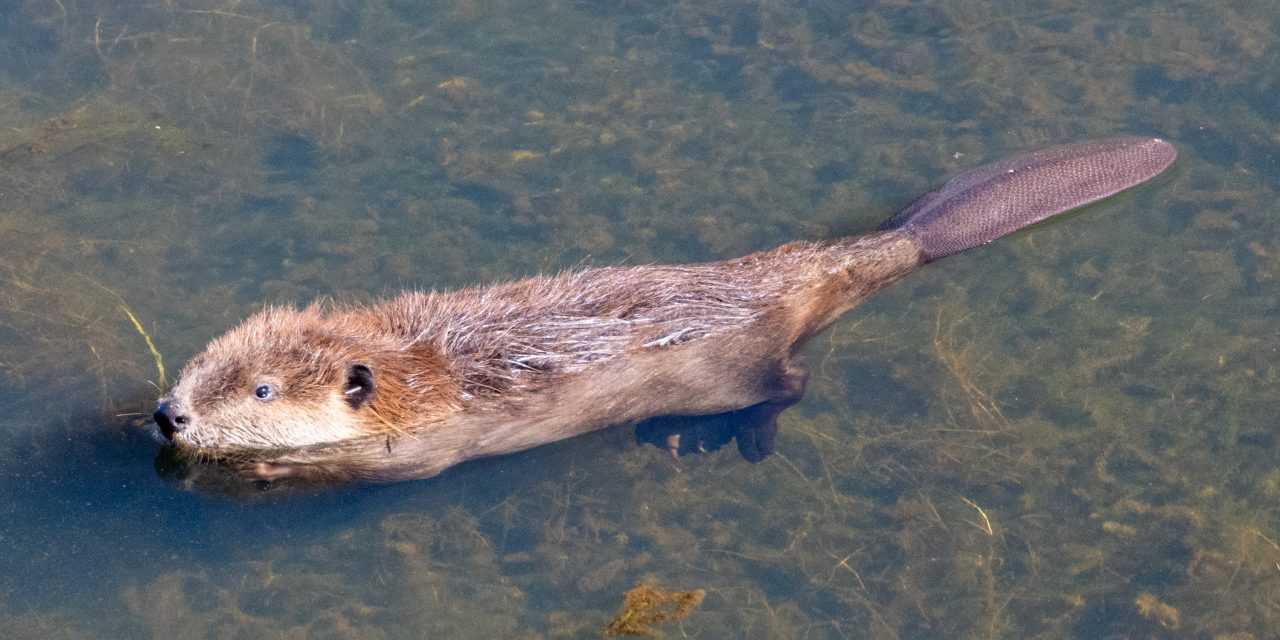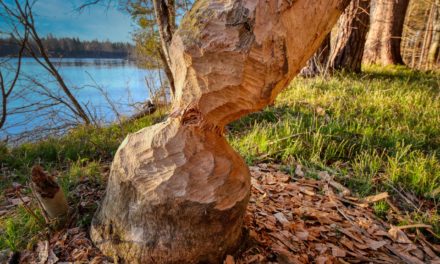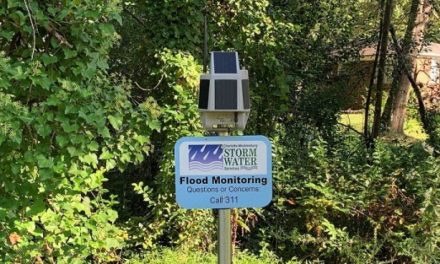The California Department of Fish and Wildlife (CDFW), in collaboration with the Maidu Summit Consortium (Chester, California), has reintroduced beavers into California waters after nearly 75 years.
In December, seven beavers were released into Tásmam Koyóm, a tribal community in Plumas County, where they joined a single beaver that already resided in the area. This reintroduction, part of CDFW’s statewide Beaver Restoration Program, aims to establish a breeding population, addressing the disappearance of beavers in the region due to hunting and habitat loss.
The relocated beavers and their surrounding ecosystems will now undergo continuous monitoring for several years, during which researchers and conservations will study the ecological transformations brought about by the beavers’ engineering impact within the watershed. The assessment will also encompass factors such as population dynamics, movement patterns, habitat utilization, and mortality rates.
A healthy beaver population has been shown to aid stormwater management by creating new wetlands that mitigate flooding and improve water quality.
Beaver Benefits
CDFW considers beavers a “keystone species,” providing ecological benefits and contributing to climate change resilience. Described as an “ecosystem-restoration tool,” beavers play a vital role in engineering aquatic habitats, leading to increased groundwater recharge and seasonal water flow among a myriad of other ecological benefits such as removing nitrogen from streams.
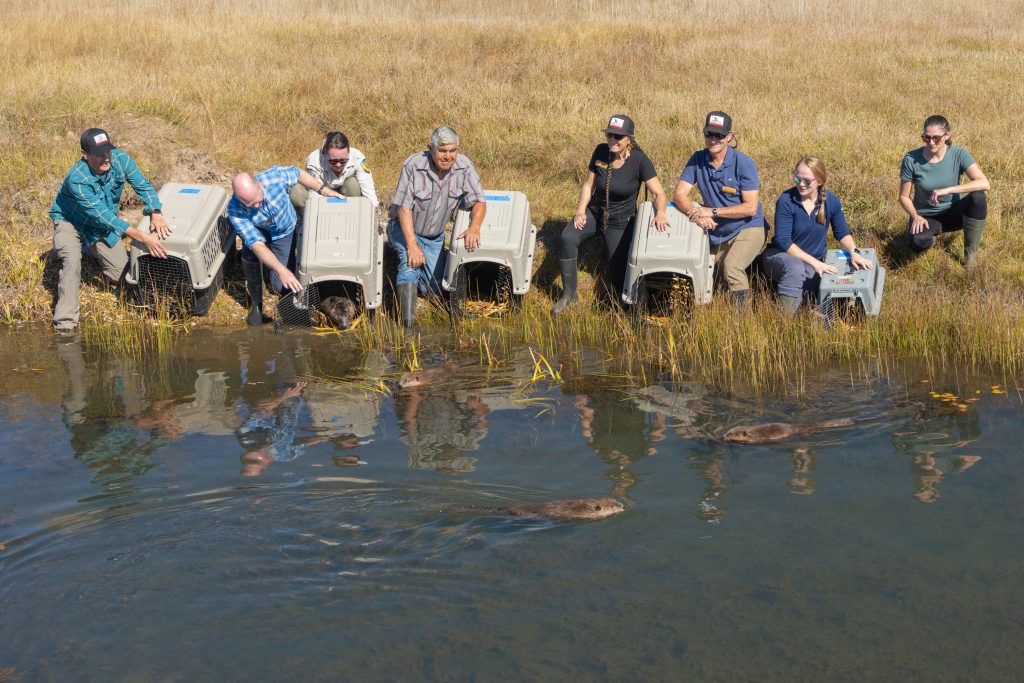
Valerie Cook, CDFW Environmental Program Manager, highlighted the cascading ecological effects that occur when beaver populations dissipate, resulting in the disappearance of other species.
“This new opportunity to have beavers translocated into restoration efforts is truly a nature-based solution where we can bring them in and just let them do the work,” Cook said.
Cook, who oversees the Beaver Restoration Program and facilitated the reintroduction of the seven beavers to Tásmam Koyóm, sees the reintroduction of beavers as a form of green infrastructure, allowing them to contribute to broader restoration efforts by leveraging their natural behaviors. This can offset the need for more formally engineered infrastructure projects, particularly in sparsely populated watersheds.
Beaver activity also has been shown to restore wetland ecosystems and boreal forests, conserving environmental biodiversity and benefitting stormwater management and water quality.
Additionally, beavers – also known as “nature’s engineers” – are teaching humans cost-effective damming techniques that allow for flood mitigation without entirely stopping waterway flow. Stormwater professionals have been able to utilize dam-like barriers, also called “leaky barriers,” made from sticks and logs to create temporary pools of water that would otherwise flow directly into populated areas.
Bane of the Beaver?
Despite their many positives, beavers have logged some negative traits when it comes to their environmental impact, according to a study by Clifford Adamchak, Ph.D. student at the University of Colorado at Boulder (CU Boulder).
The research indicates that beaver activities may intensify the spread of mercury-containing toxins in rivers and the surrounding habitats. Beaver ponds, due to their low oxygen levels, are a hot spot for bacteria that can generate mercury-containing neurotoxins. These heavy-metal pollutants then can enter lakes and streams via precipitation.
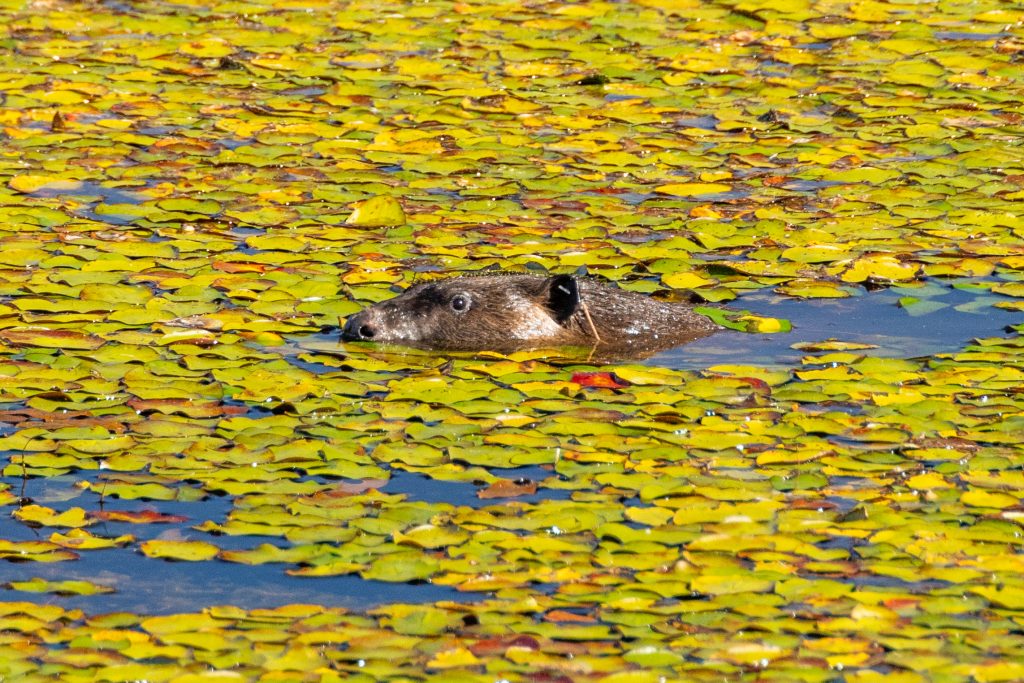
“A stream that flows smoothly with nothing stopping it would have very different biological chemical and geological processes than a stream that has cascading beaver dams and ponds,” said Adamchak. “Beaver activities also impact the surrounding landscape, because the animals forage for woody vegetation on land.”
However, research is still in its early stages. Prior research published in Environmental Science & Technology indicates that only newly formed beaver ponds exhibit elevated concentrations of methylmercury (MeHg). As these ponds age, levels notably decline.
In the study, European scientists measured MeHg levels in waterways across five pioneer and seven recolonized beaver systems over the course of two years. In the pioneer systems, MeHg levels concentrations increased 3.5-fold downstream due to “a combination of anoxic or subanoxic conditions in the former riparian soils and the high availability of degradable carbon sources for sulfur reducing bacteria and other methylators in these flooded areas.” However, the increase appeared to be temporary as the ecosystem adapted to the change.
Even after abandonment, beaver systems still maintain dam structure and channels that continue to affect vegetation and hydrological pathways. The impact of recolonization was less intensive to the water system, which would likely result in lower MeHg concentrations, the study claimed.
Beaver Family Update
In January, Cook provided an update on how the beaver family is settling in and interacting with Tásmam Koyóm’s resident beaver:
“In the weeks following the release, the beavers excavated their first burrow at the release site, began creating trails to surrounding feeding sites and began establishing their first feeding beds. GPS data, game camera photos and Passive Integrated Transponder tag readings documented the beavers exploring miles of the valley immediately following their release before settling in at the release site and continuing to utilize resources both up and downstream of the occupied area. The subadult beaver, a male, dispersed to a downstream location on the edge of the territory of the valley’s one known resident beaver.
“More recently, high precipitation events during late fall and early winter flooded the beavers’ initial release site burrow. Since then, the beavers migrated a short distance away to a site where they had begun construction on a lodge and their first dam. The subadult beaver has continued to stay near the resident beaver’s territory rather than with the rest of the family group, and as of December they seem to be sharing the same space and interacting – potentially indicating the resident beaver is a female. During the month of December, five of the seven beavers released were detected via transmitter, PIT tag or game camera data, confirming survival of those beavers. The status of the two kits that have not yet been detected is not currently known. The survival and status of the released beavers will be determined when the snow has melted from the valley in the spring.”
Top image courtesy of the California Department of Fish and Wildlife

ABOUT THE AUTHOR
Michelle Kuester is a staff member of the Water Environment Federation, where she serves as Associate Editor of Stormwater Report and Water Environment & Technology magazine. She can be reached at mkuester@wef.org.

